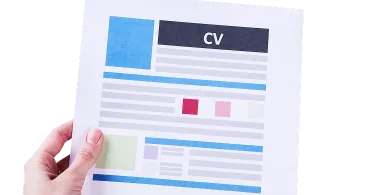Do you actually know someone who has been working for the same employer at the same company for his entire career period? Probably it would take you a bit of time to recall. Because of a current job crisis, it’s sort of difficult not to avoid downtime in your job employment history.
Many employees consider downtime, as a self-conviction, however, it’s never meant to be a deal-breaker for potential employers, when you try to re-enter the workforce. So, before starting professional resume editing give answers to these questions.

Small resume gaps between a few months and somewhat less the year can be listed in years, rather than months. Although, if your downtime equaled at least one year and more, you can write down the explanation of why you had to be dismissed for so long.
For instance, it’s could be “stayed at home to raise two children” or maybe “had to take care of a sick family member”. In fact, it’s quite an individual choice, whether to include the reasons or limit your text to writing dates only.
According to professional experts, there’s no right or wrong: after all, various recruiters react to resumes differently.
However, sometimes it’s way more important to show how skillful and applicable you’re managed to stay in your particular work field, rather than pointing out the reason. As long as you were engaged with some volunteering projects, continued your education, or at least stayed aware of current job trends and news in order to show your constant development, as a competitive worker (even if you had no employment), you would have much more chances to recover. By the way, keeping in touch with people in your professional network, such as colleagues or former college mates, is also beneficial.
Wondering which way you could prove that you really stayed current in your work industry, even if there’re gaps on a resume? One of the cheapest, easiest, and most workable ways to keep your professional skills fresh is through social media or other digital tools that are constantly updating and the difference between their old platforms and the newest ones do really matter. The best thing about social media is its universality: you wouldn’t find any work industries not using any of those.
Anthony Shop, the co-founder of Social Driver – a digital and social technology agency, has admitted the power of social media on your self-education and professional network development, especially when you’re concerned about the employment gaps on your resume.
Generally, he advises everyone, who is temporarily unemployed for a reason, to take part in online workshops, webinars, or use social networks in order to have at least some connection to people or the company/organization you’re striving to apply to. Another great opportunity is taking up open courses, offered by hundreds of top world universities and schools, so-called MOOCs, which tend to cost just a little, or sometimes even be completely free.

Another hint: job-seeking tutorials with almost thousands of topics available.

Andrea Stone, who’s a director of career services at CUNY Graduate School Of Journalism, gives a pair of additional recommendations in regard to resume gaps in employment. She says that those, who experienced downtime in their work history, should be prepared to discuss questions that would be related to their previous positions, but rather be focused on the time of skills you’ve obtained during your working gap or during your other career in case you’re switching to completely new position.
She says that many qualifications and skills can be easily acquired on a daily basis and perfectly apply to various kinds of jobs (e.g. team working, communication skills, etc.).
Therefore, if you wish to change your career, it’s not about the titles of your former job positions, but rather what you’ve learned from doing this particular job. Just ask yourself if your desirable job corresponds to your present skills and start the research.